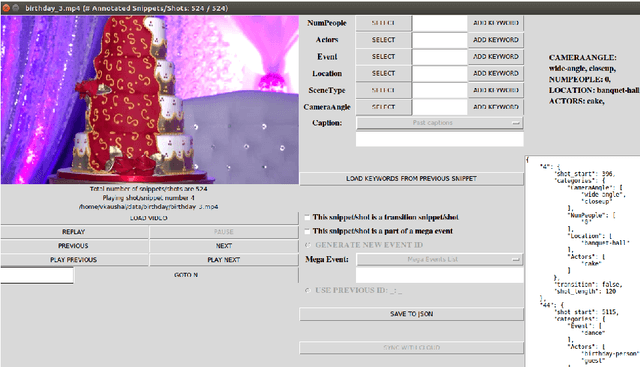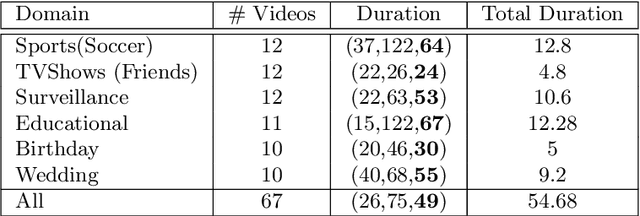Realistic Video Summarization through VISIOCITY: A New Benchmark and Evaluation Framework
Paper and Code
Aug 25, 2020



Automatic video summarization is still an unsolved problem due to several challenges. We take steps towards making automatic video summarization more realistic by addressing them. Firstly, the currently available datasets either have very short videos or have few long videos of only a particular type. We introduce a new benchmarking dataset VISIOCITY which comprises of longer videos across six different categories with dense concept annotations capable of supporting different flavors of video summarization and can be used for other vision problems. Secondly, for long videos, human reference summaries are difficult to obtain. We present a novel recipe based on pareto optimality to automatically generate multiple reference summaries from indirect ground truth present in VISIOCITY. We show that these summaries are at par with human summaries. Thirdly, we demonstrate that in the presence of multiple ground truth summaries (due to the highly subjective nature of the task), learning from a single combined ground truth summary using a single loss function is not a good idea. We propose a simple recipe VISIOCITY-SUM to enhance an existing model using a combination of losses and demonstrate that it beats the current state of the art techniques when tested on VISIOCITY. We also show that a single measure to evaluate a summary, as is the current typical practice, falls short. We propose a framework for better quantitative assessment of summary quality which is closer to human judgment than a single measure, say F1. We report the performance of a few representative techniques of video summarization on VISIOCITY assessed using various measures and bring out the limitation of the techniques and/or the assessment mechanism in modeling human judgment and demonstrate the effectiveness of our evaluation framework in doing so.
 Add to Chrome
Add to Chrome Add to Firefox
Add to Firefox Add to Edge
Add to Edge